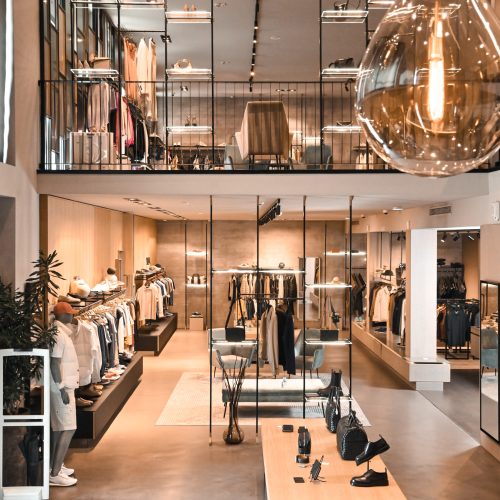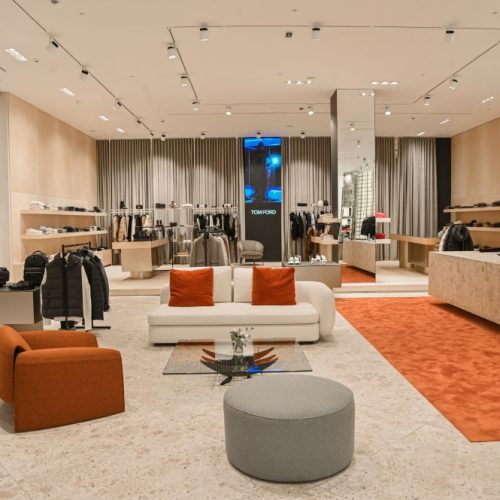In 1994, the Victoria and Albert Museum in London hosted an exhibition titled “Streetstyle: From Sidewalk to Catwalk, 1940 to Tomorrow,” curated by Amy de la Haye. The exhibition showcased nearly 300 items representing British and American subcultures and countercultures, aiming to illustrate their influential role in Britain. The exhibition offered fresh interpretations of the dynamics of clothing by placing items in a cultural context, featuring attire from biker, surfer, rockabilly, hipster, rocker, punk, goth, and other subcultures. Leather jackets, denim, kaftans, baseball caps, cowboy boots, and psychedelic shirts were presented alongside music, photography, video, and fashion details, providing visibility to the complex factors that influenced the development of street style.
“Streetstyle” was the first fashion exhibition with the concept of highlighting the diversity of subcultures in which young people created distinctive identities through clothing and music of their choice. Pioneers of street fashion like Jimmy Jumble, Sarah Ratty, Oz, Clare Tranter, and Craig Morrison were showcased alongside renowned high fashion names, such as Karl Lagerfeld, Donna Karan, Yves Saint Laurent, Vivienne Westwood, Calvin Klein, and Gianni Versace. Even these high fashion designers considered street fashion a powerful source of inspiration. Due to its innovative approach and high attendance, the exhibition was met with criticism, from questions about the appropriateness of such clothing in a prestigious British art institution to critiques claiming it was too academic or failed to connect clothing with other aspects of subcultures, such as music and politics, or to keep pace with the rapid evolution of street styles.
Today, nearly thirty years later, the connection between street style and mainstream fashion is clear and recognizable to all clothing enthusiasts. Therefore, it’s no surprise that this theme has gained a prominent place in one of the notable fashion exhibitions in 2023, “Beyond the Little Black Dress.” Curated by Georgina Ripley, this exhibition took place at the National Museums Scotland in Edinburgh. By tracing the history of the little black dress through more than 60 clothing items from Coco Chanel and the 1920s to the present day, the exhibition deconstructed this essential piece of women’s clothing, viewing it as a blank canvas onto which various identities and cultural meanings have been projected over a century.
A segment of the “Beyond the Little Black Dress” exhibition, titled “Subcultural Black,” focused on the symbolism of the color black in the clothing of different 20th-century subcultural movements and their influence on mainstream fashion. Within this segment, models by British designers Zandra Rhodes and Gareth Pugh, inspired by punk, were featured, as well as those by British designer Theresa Coburn and Belgian designer Olivier Theyskens, inspired by the goth subculture.
The source of inspiration for mainstream fashion was the subculture of streetwear, rooted in the 1970s hip-hop scene and Afro-Caribbean, Latino, and African-American neighborhoods in New York, such as the Bronx. One of the brands known for luxury clothing inspired by street style is the Italian brand Off-White, founded in Milan in 2013 by American fashion designer Virgil Abloh. In the “Beyond the Little Black Dress” exhibition, this brand was represented by a black dress from the pre-fall 2018 collection. The short Off-White dress, made of viscose and polyester, featured the text “Little black dress” in quotation marks. Abloh’s use of quoted references to popular culture and fashion history is a recognizable element of his brand and design. By presenting the words “Little black dress” as a quotation, Abloh simultaneously questions their validity and satirizes the cultural currency of the little black dress.
Sources of inspiration play a significant role in the contemporary fashion system, involving interactions among various factors, including fashion houses, fabric and clothing manufacturers, distributors, and consumers. In this regard, references to street style and popular culture allow fashion designers to successfully mediate between these factors, creating fashion trends that reflect the spirit of the times.
Draginja Maskareli
Museum Advisor – Art and Fashion Historian
Images:
1–3. Beyond the Little Black Dress Exhibition, National Museums Scotland, Edinburgh, September 25, 2023; Photo: D. Maskareli
Virgil Abloh, Paris Fashion Week, Fall/Winter 2019; Photo: Wikimedia Commons / CC BY-SA 4.0 DEED / Myles Kalus Anak Jihem
Nike and Off-White Air Force 1 Sneakers, 2017; Photo: Wikimedia Commons / CC BY-SA 4.0 DEED / Puppyc








